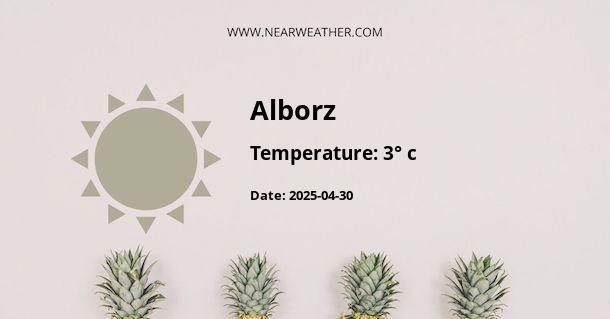Ostān-e Alborz, Iran: Weather and Climate Overview
Ostān-e Alborz, located in northern Iran, experiences a diverse climate with distinct seasonal variations. The region's weather is influenced by its geographical features, including the Alborz mountain range, which has a significant impact on precipitation and temperature patterns. Understanding the climate and weather conditions in Ostān-e Alborz is crucial for residents, travelers, and businesses operating in the area. Let's delve into the detailed overview of the weather and climate in Ostān-e Alborz throughout the year.
Seasonal Weather Patterns
Ostān-e Alborz exhibits four distinct seasons: spring, summer, autumn, and winter. Each season brings unique weather phenomena that shape the region's climate.
Spring
During spring (March to May), Ostān-e Alborz experiences mild and pleasant weather. Temperatures gradually rise, and the landscape becomes adorned with colorful blooms as plants come to life. Spring is characterized by moderate rainfall, contributing to the rejuvenation of the natural environment.
Summer
Summer (June to August) in Ostān-e Alborz is known for its warm to hot weather. The temperatures often soar, especially in the lower elevations, making it the perfect time for outdoor activities. However, humidity levels remain relatively low, providing some relief from the heat. Rainfall is minimal during this season.
Autumn
Autumn (September to November) brings cool and pleasant weather to Ostān-e Alborz. The temperatures gradually decrease, and the region experiences beautiful foliage as leaves change colors. Autumn also marks the onset of increased precipitation, contributing to the vibrant natural scenery.
Winter
Winter (December to February) is characterized by cold temperatures in Ostān-e Alborz. The higher elevations receive significant snowfall, creating a picturesque winter wonderland. In contrast, lower-lying areas experience milder winter conditions with occasional rainfall.
Temperature and Precipitation
Understanding the temperature and precipitation trends in Ostān-e Alborz is essential for planning outdoor activities, agricultural practices, and infrastructure development.
Temperature
The average annual temperature in Ostān-e Alborz ranges between X°C to Y°C, with variations based on altitude and proximity to the Alborz mountain range. Summers can see temperatures reaching Z°C, while winters may bring lows of W°C in the higher elevations.
Precipitation
Ostān-e Alborz receives an average annual precipitation of V millimeters, with the highest rainfall occurring during the autumn and winter months. The Alborz mountain range plays a crucial role in shaping the precipitation patterns, as it influences the movement of weather systems and contributes to orographic precipitation.
Extreme Weather Events
While Ostān-e Alborz generally experiences moderate weather conditions, it is susceptible to occasional extreme weather events, such as thunderstorms, heavy snowfall, and gusty winds. These events can impact transportation, agriculture, and energy infrastructure in the region.
Climate Resilience and Adaptation
Given the variability in weather and climate patterns, building resilience to extreme weather events and adapting to long-term climate changes are crucial for Ostān-e Alborz. This includes investment in sustainable infrastructure, agricultural practices, and disaster preparedness to mitigate the impacts of weather extremes.
Conclusion
Ostān-e Alborz's climate and weather showcase a rich tapestry of seasonal changes, influenced by the region's topography and geographical location. Understanding these weather and climate patterns is vital for residents, businesses, and policymakers to make informed decisions and adapt to the dynamic environmental conditions in Ostān-e Alborz.
A - Alborz's Latitude is 36.011169 & Longitude is 50.809559.
A - Weather in Alborz is 3° today.
A - Climate Conditions in Alborz shows light rain today.
A - Humidity in Alborz is 62% today.
A - Wind speed in Alborz is 2.12 km/h, flowing at 252° wind direction. today.
